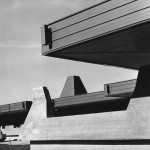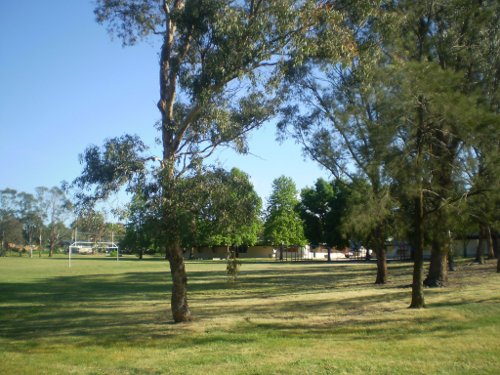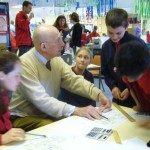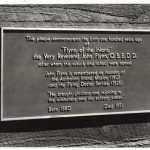The following Statement of Significance of Heritage and Community Value 2011 has been prepared following two Flynn wide surveys conducted by Flynn community groups. Most recently more than 700 residents took part in a doorknock and the submission of statements on heritage value to the ACT Civil and Administrative Appeals Tribunal in late 2010.
This statement also draws upon a previous survey of all Flynn Households as well as statements of heritage significance submitted for the ACT (2007) and national (2010) nominations for heritage listing.
Summary: Significance of heritage and community value
The Flynn Primary School, Preschool, Health Centre and grounds have exceptional heritage significance and community value because of the outstanding combination of architectural, functional, social and cultural factors.
Much is written about Enrico Taglietti’s remarkable twentieth century organic architecture at Flynn and its pivotal place in open-plan education history as the first fully open-plan showcase school. This architecture is exceptionally valued by the Flynn and local community as well as the architectural community in the ACT, nationally and internationally.
The outstanding architecture at the Flynn school precinct is sufficient to afford heritage significance, however it gains a unique and higher value in the ACT through the success that the architecture has in delivering the intended social, educational and cultural functions within its community. Among his widely acclaimed and honoured works, AIA Gold Medallist, architect, Enrico Taglietti rates Flynn as his ‘most important work’ based on the success of the architecture in achieving these goals.
In keeping with its twentieth century organic style, the architectural value embraces not only the internal and external fabric but how that fabric is set within the landscape and the role of all those elements in use and function.
In particular the remarkable and iconic architecture is valued as a school and community centre – the designed ‘village’ and meeting place of Flynn. It is valued as a place where children and adults are imparted with skills and knowledge and deep and enduring cultural connections with ‘Flynn of the Inland’ (Reverend John Flynn), his family and colleagues, the Australian Inland Mission and Royal Flying Doctor Service. These cultural and educational associations are embedded in the architecture and function of the place through the National Memorial to Flynn, the biplane shape (or envelope) of the building and its use as a school, museum and cultural centre for understanding this heritage.
Heritage and community significance of the Flynn precinct that is inseparably linked to the architecture include the value of:
- the place as an outcome-designed and purpose-built school, meeting place and ‘village centre’ of the Flynn community
- the unique open-plan configuration, sculpted ceilings, interior and exterior courtyards, steps and terraces, elegantly angled (moulded concrete) walls, dramatic moulded shapes and overhangs, playing areas, playing fields murals and mosaics in creating a stimulating learning, social and cultural environment for children, families and adults
- the place as an ‘ampitheatre of life’ for: gaining knowledge and understanding, developing life-skills and friendships and building community
- the use of exquisite shape, volumes, geometry and flow of space from inside to out (including courtyards, moulded concrete walls, steps, terraces, coiffered ceilings, overhangs, performance hall, cafeteria, playing areas, playing fields murals and mosaics) to create the gathering place, or ‘village centre’ of Flynn
- the open space, playing fields and trees that create recreational areas, a safe and healthy heart of the suburb and stunning views to the Brindabella mountains
- the striking horizontal architecture and the way that it nestles into and is in harmony with the mountains, trees and open landscape
- the multi-use community hall, cafeteria, craft and parent room and network of large and small courtyards that together form the ‘hub’ of the village for community events, bushdances, dinners and barbecues
- the place in developing deep cultural connections and understanding and fostering the heritage and legacy of ‘Flynn of the Inland’ Reverend John Flynn, the Australian Inland Mission and the Royal Flying Doctor Service
- the role the place has in the significant heritage and legacy of John Flynn and the Flying Doctors through the national memorial, the biplane shape of the building and its use as museum and cultural centre
- the long involvement and connection with architect Enrico Taglietti in the life of the school, learning and tuition and in the understanding, interpretation and shared use of the place
- the multi-use community resources centre designed by Enrico Taglietti but built through community initiative and a ‘buy-a-brick’ campaign following a fire in 1995.



